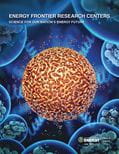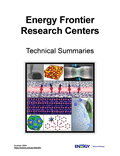Radiation Resistant Foams
Scientific AchievementExperiments and computer simulations demonstrate that nanoscale gold foams can be designed for radiation resistance
Significance and ImpactMay lead to the design of new radiation resistant materials that extend the lifetime and increase the safety of nuclear reactors.
Research Details |
Left: Molecular dynamics computer simulations of radiation damage in a material with 5 nm ligaments shows that the areas with the most displacement from equilibrium (yellow) are about the same size as the ligament, meaning the ligaments are too thin and will be destroyed. Middle: The window of radiation resistance (triangular area) in terms of diameter of the foam ligaments and the irradiation dose rate. Radiation damage resistant ligaments are those with diameters above the lower critical size that aren't destroyed (red line) and below the dose-rate line (three lines are shown for three different defect diffusivities) where the surface is close enough to allow recovery. Right: Transmission electron microscopy (TEM) images of nanoporous gold before (upper left) and after irradiation (upper right) show very similar structures. A close-up of the irradiated sample at higher magnification (lower image) confirms the lack of radiation damage to the structure.
Reference: E. M. Bringa, J. D. Monk, A. Caro, A. Misra, L. Zepeda-Ruiz, M. Duchaineau, F. Abraham, M. Nastasi, S. T. Picraux, Y. Q. Wang, and D. Farkas, Are Nanoporous Materials Radiation Resistant?, Nano Letters, Article ASAP (2011) [DOI: 10.1021/nl201383u].
Support: Work was performed at Los Alamos National Laboratory, Lawrence Livermore National Laboratory, Virginia Tech, Louisiana State University, and the Universidad Nacional de Cuyo and supported in part by the Center for Materials at Irradiation and Mechanical Extremes (CMIME), an EFRC led by Amit Misra at Los Alamos National Laboratory.









